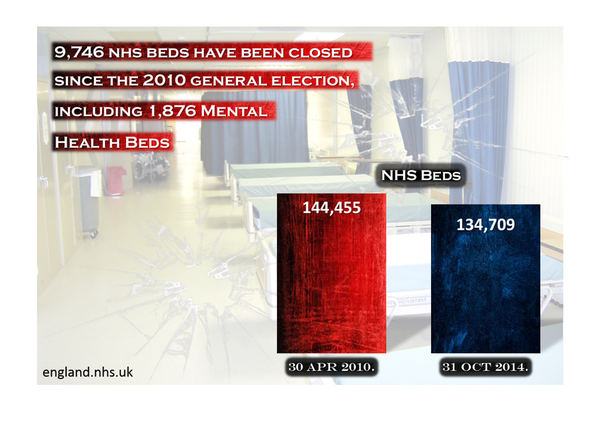|
Fitness Blog Covering Topics Of Interest Thursday, November 26 2015
In his Autumn 2015 statement, the Chancellor pledges to spend £600m on mental health. Out comes the fan fare and heaps and loads of praise for him and his party on tackling the current unacceptable under funded mental health situation in England. Let us, for a moment, step back and open the history books and look at mental health funding in England since 2010; the time when George Osborne, our Chancellor took office. Funding for NHS trusts to provide mental health services has fallen by more than 8% in real terms since 2010, according to research by Community Care and BBC News. Figures obtained under the Freedom of Information Act from 43 mental health trusts in England show that total funding for the trusts’ mental health services dropped in real terms by 8.25 per cent, or almost £600m (once inflation has been accounted for). Now, after a reality check has been taken of the situation should we still be showering the Chancellor with praise for his generosity?. In real terms, the Chancellor has been cutting funding to the most vulnerable persons in society, the mentally ill by £600m over the last 5 years and now we expect them to be thankful that he's giving it back. What sort of society do we live in where we make the most vulnerable suffer by not providing adequate services for them?. All that the Chancellor has done is to put mental health in England back to where it was in 2010 when he became chancellor and society should be grateful for this?. Gym In Motion provides fitness programs to persons struggling with mental health illness. What we've seen over the past 5 years is the impact that the taking of £600m in cuts from the mental health services has had on the most vulnerable in society. Front line services being strained to their maximum, long waiting lines to access therapy while the majority of people with mental health issues just don't get any help at all. Society is denying these vulnerable people assistance in the name of saving money. Not only have I experienced this from a supplier's point of view, but from first hand experience as I have a number family members who suffer or have suffered with mental health illness over the years. No where, has any government minister, employee or consultant, looked behind the scenes and seen that by denying services to a person with a mental health illness, in most cases causes their mental state of mind to worsen and so they spiral into deteriation. These are the consequences that are just brushed under the carpet, the consequences that aren't mentioned at dinner parties for they force society to take note of their actions which is not a pretty sight. Somehow, I don't think that those with a mental health illness will be heralding our Chancellor for giving back to the mental health services, what was rightly there's in the first place. If I'm a cynical person, I'd say that this whole announcement was just for our Chancellor and government of the day to get brownie points and be seen to do something about a dire situation which they created in the first place. The uninformed will be thankful, the informed will not be amused. References: Friday, November 06 2015
Vitamin and mineral supplements from a bottle simply can’t match all the biologically active compounds teeming in a well-stocked pantry. By focusing on the big picture, it’s easy to get plenty of the vitamins, minerals, and other micronutrients you need to keep you healthy and prevent disease. Here are some tips. Fiber. It’s the part of plant foods that we can’t digest. Eating foods high in fiber helps reduce total and LDL (“bad”) cholesterol, improve blood sugar control, and prevent constipation. High-fiber foods also help with weight loss by making you feel full. There are lots of high-fiber foods to choose from:
Vitamins and minerals. Vitamins are organic substances found in plants and animals. Minerals are inorganic elements from the earth (soil and water). Both are essential for normal growth and optimal health. Here’s a list of vitamins and minerals that are crucial for good health, plus the best food sources of each:
Phytochemicals. Phytochemicals are chemicals made by plants. They are not essential to life, but they do have a positive effect on health. Diets rich in phytochemicals have been associated with a lower risk of chronic diseases, such as cancer and heart disease. They are found in fruits, vegetables, beans, and grains. The following is a list of key phytochemicals, plus the best food sources of each.
Be creative Adding finely grated carrots or zucchini to pasta sauce, meat loaf, chili, or a stew is one way to get an extra serving of vegetables. Dip vegetables into hummus or another bean spread, some spiced yogurt, or even a bit of ranch dressing. Slather peanut butter on a banana or slices of apple. Try mashed avocado as a dip with diced tomatoes and onions, or as a sandwich spread, topped with spinach leaves, tomatoes, and a slice of cheese. To find out more about nutrition contact Ronald on 07929256856 or @GymInMotion Friday, November 06 2015
You might be eager to leap into your exercise routine and get on with the day — but don’t just dive in. Starting a workout with “cold” muscles can lead to injury. It’s important to start each workout with a warm-up and end with a cool-down — and that goes for true beginners, seasoned pros, and everyone in between. Warm-upWarming up pumps nutrient-rich, oxygenated blood to your muscles as it speeds up your heart rate and breathing. A good warm-up should last five to 10 minutes and work all major muscle groups. For best results, start slowly, then pick up the pace. Many warm-up routines focus on cardio and range-of-motion exercises, such as jumping jacks and lunges. If you prefer, you can do a simpler warm-up by walking in place while gently swinging your arms, or even dancing to a few songs. Cool-downAfter your workout, it’s best to spend five to 10 minutes cooling down through a sequence of slow movements. This helps prevent muscle cramps and dizziness while gradually slowing your breathing and heart rate. An effective cool-down also incorporates stretching exercises to relax and lengthen muscles throughout your body and improve your range of motion. To get the most out of these exercises, hold each stretch for 10 to 30 seconds. The longer you can hold a stretch, the better for improving your flexibility. As with the warm-up, it’s best to flow from one stretch to the next without rests in between. |
 |




 Image: iStock
Image: iStock